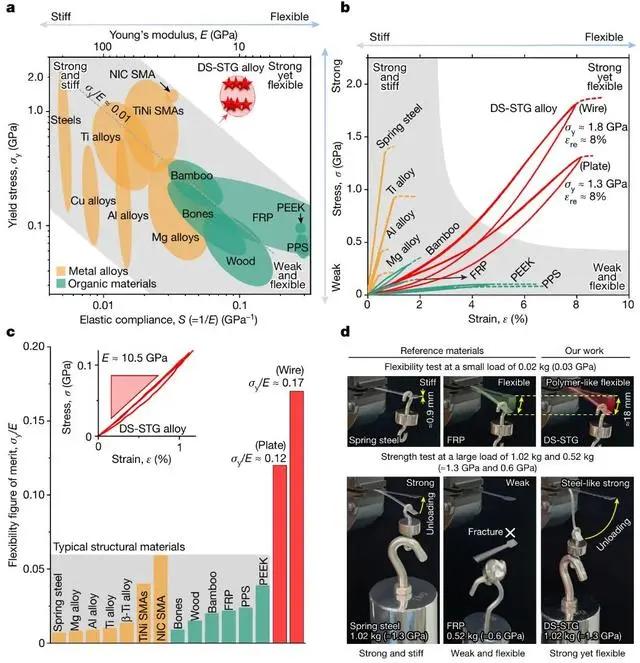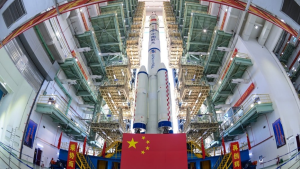Miraculous Metal Invented by Chinese Scientists: Strong Yet Flexible
Meet the shape-shifting superhero of the materials world: a titanium-nickel alloy that combines the strength of steel with the flexibility of rubber. According to the study published in the latest issue of Nature, this isn’t science fiction; it’s the potential future enabled by a revolutionary new material that’s causing a stir in scientific circles. Developed by a team of innovative researchers at Xi’an Jiaotong University in China, this marvel of modern metallurgy is poised to redefine what’s possible in fields ranging from aerospace to robotics.
Picture this: You’re watching a high-stakes rescue operation. A slender, serpentine robot effortlessly navigates the twisted wreckage of a collapsed building. Its “muscles,” made from this new alloy, are strong enough to lift heavy debris yet flexible enough to squeeze through tight spaces. This is the kind of scenario that could become reality, thanks to this groundbreaking material.
But what makes this alloy so special? In the world of materials science, strength and flexibility have long been at odds. Make something stronger, and it typically becomes more rigid. Make it more flexible, and it usually loses strength. This new alloy breaks all the rules, offering the best of both worlds.
To put it in perspective, imagine a paper clip that’s as strong as a car’s frame but can twist and bend like a rubber band without breaking. That’s the kind of mind-bending property combination we’re talking about here.
The secret lies in its unique microstructure, which the researchers call a “dual-seed strain glass.” Without getting too technical, think of it as a microscopic mosaic where different crystal structures coexist in a carefully controlled chaos. This unusual arrangement allows the material to be incredibly strong while remaining surprisingly flexible.
At the heart of this technological marvel is a precisely crafted blend of two familiar metals: titanium and nickel. The researchers fine-tuned the ratio to 50.8 atomic percent nickel and 49.2 percent titanium. This specific composition, combined with a specialized heat and mechanical treatment process, is what gives the alloy its extraordinary properties. It’s a reminder that in the world of materials science, sometimes the most groundbreaking discoveries come from reimagining the potential of elements we thought we knew well.
 The DS-STG alloy exhibits a combination of steel-like high strength and polymer-like ultralow Young’s modulus.
The DS-STG alloy exhibits a combination of steel-like high strength and polymer-like ultralow Young’s modulus.
What’s more, this wonder material maintains its extraordinary properties across a wide temperature range, from a frigid -80°C to a toasty +80°C. This makes it ideal for use in extreme environments, like the icy depths of space or the scorching heat of a jet engine.
The potential applications are as flexible as the material itself. “The emergence of this new type of metal material, which is as strong as ultra-high-strength steel yet as flexible as polymer materials, might turn a whole range of future technologies from distant science fiction into reality,” says Xu Zhizhi, a doctoral student on the research team. Imagine standing on the observation deck of a sleek, futuristic aircraft. As it slices through the air at supersonic speeds, you notice something extraordinary – the wings are morphing, subtly changing shape to optimize aerodynamics in real-time.

Beyond shape-shifting aircraft wings, we could see ultra-strong yet pliable artificial muscles powering next-generation prosthetics or robots, or spacewalking astronauts wearing suits made with fabric-like sheets of this alloy, offering unprecedented protection and mobility.
In the world of sports, this alloy could revolutionize equipment design. What about a tennis racket that adjusts its shape mid-swing for the perfect shot? Or ski boots that flex comfortably while walking but stiffen instantly for precise control on the slopes?
While it’s still early days for this remarkable material, the possibilities it opens up are truly exciting.



